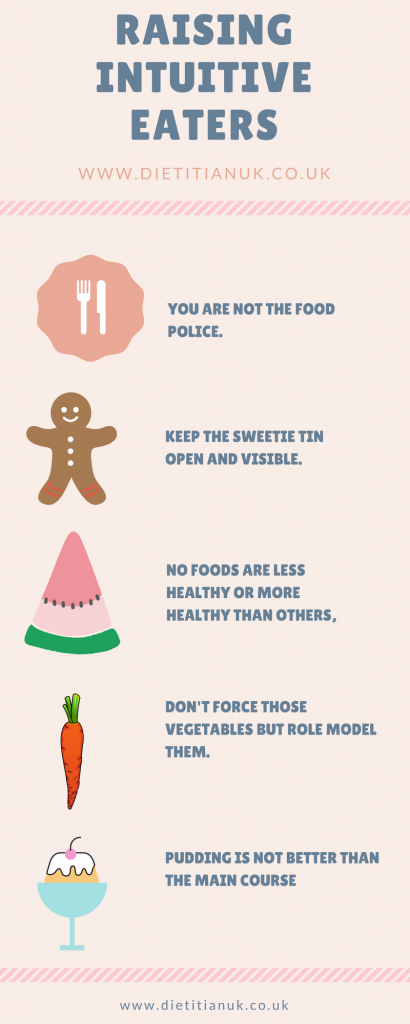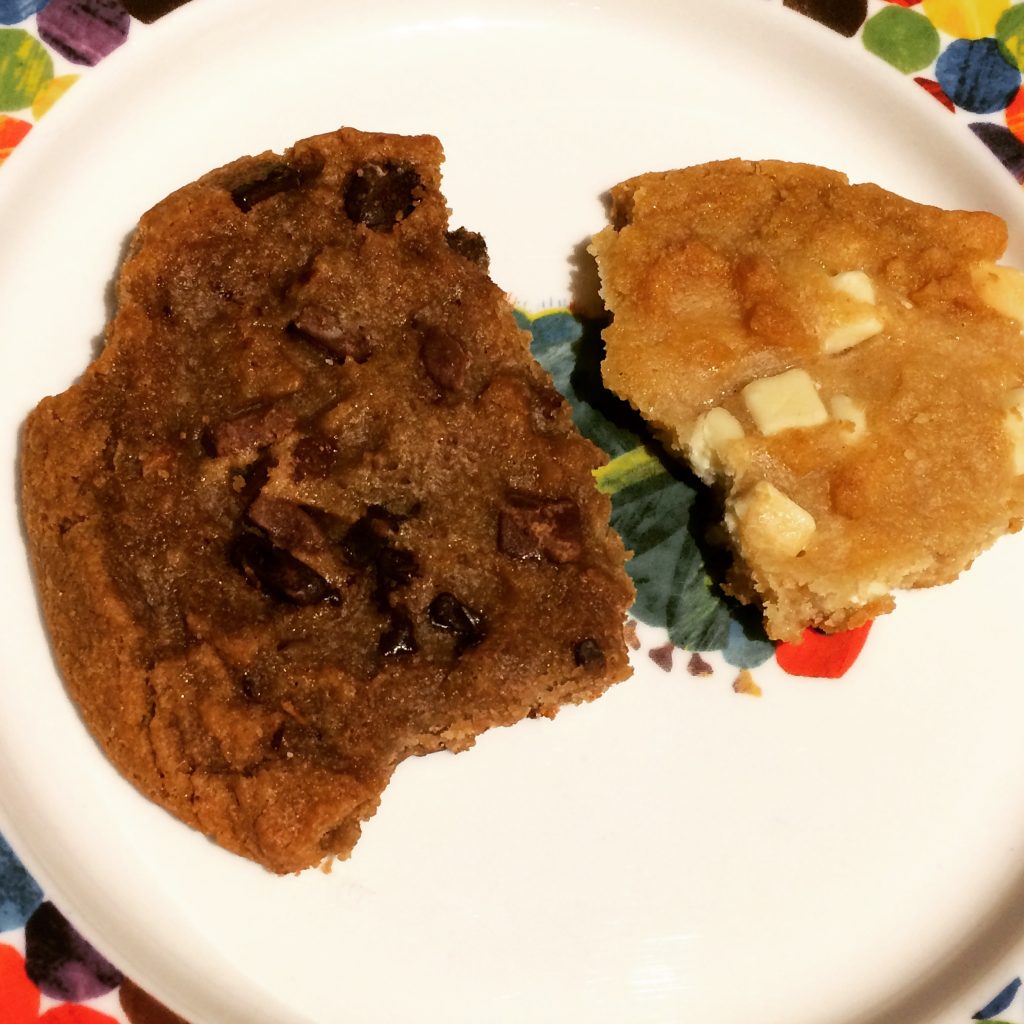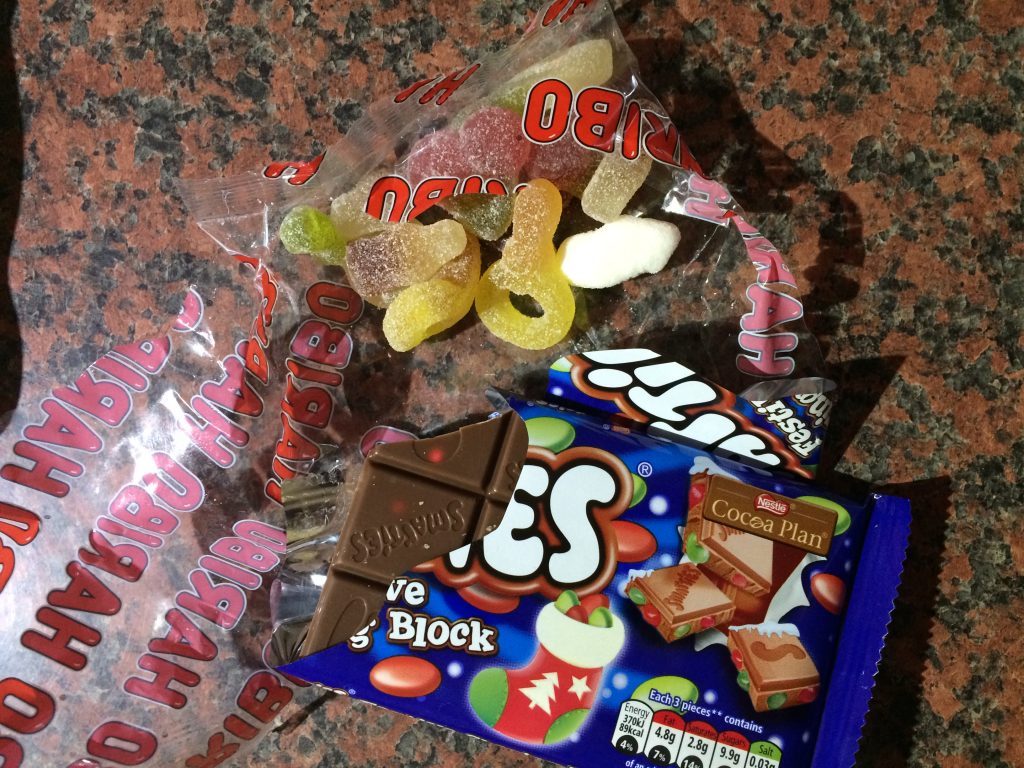Being a dietitian is the easy part. Being a mum, now that’s a much harder job. Currently I have 3 children, Miss K aged 7, J-boy aged 4 and Miss E, 18 months. Teaching them how to eat a balanced intake, how to listen to their hunger and fullness signals and helping each child on their journey with this in different ways is hard. I find myself having to change my language, change my mindset and be flexible a lot. My children do not eat like I do. They are their own individuals and have their own signals to listen and respond to. Too often I try to parent their eating and actually I’m not in their bodies. They are.
Here are some of the mistakes I’ve made along the way. A dietitan who makes mistakes, with her own kids, ummmm yes. All the time. I’m sharing these so hopefully it will help someone else and to show that we all make mistakes.

- Don’t be the Food Police. This is all too easy a trap to fall into. Oh so easy. As a parent boundaries are important and you don’t want your child to be eating all the biscuits all day, everyday. I’ve certainly had a child who will ask for a biscuit continually until they get one. No matter how often you offer another snack it just comes back to that biscuit. For ages I would say No to the biscuit, I’ve had a lot of biscuit tantrums. It’s now with great relief I can say I now say yes to the biscuit in the context of a balanced snack. After pre/school snacks are often a biscuit with apple and crackers, or toast with peanut butter and something from the sweet tin.
- Keep the sweetie tin open. Ours used to be on the top shelf of the cupboard. Visible but out of reach. However all this actually did was make the sweetie tin special and lusted after which is the opposite of what I was trying to achieve. When you restrict a food it can make it more desirable, we want the things we cannot have. It also sets those foods apart from the rest, but why are sweets anymore special than say an apple? So the sweet tin is now lower down and we have sweets at the end of a meal or as part of a snack. I talk about having less of the sweet foods so we don’t get tummy ache and to keep our teeth healthy in the same way we talk about this with dried fruit.
- No foods are less healthy. Much like I would not recommend you call foods good or bad, try not to call some foods healthy and some less healthy. Why? Well it is often the way nutrition and healthy eating is taught in school but it actually doesn’t make sense. What makes a food bad? Thinking about foods as good/bad or healthy/less healthy can lead to guilt when you eat them. In actual fact it is not a problem to eat any food as long as you are enjoying it and eating it guilt free. We focus on all foods being good foods, it is just some you eat less of as they make you feel sick or damage your teeth. I encourage the children to think about how their tummies feel when they are eating and to stop when they have had enough as there will be another day to finish it. If my children choose to overeat sweeter foods it can be quite useful, as later we can reflect on why they feel a bit queasy! This happened recently after too much Eton Mess, resulting in a mess on the floor.
- Eat your vegetables but don’t force them to. Oh boy, this is one I struggle with. I want my children to eat their veggies so much. Yet the more I push this, the less likely they are to enjoy them and just eat them under pressure. This could then lead to them not liking veggies at all. I had a boy who was not into his veg at all, but by keeping things pressure free, ignoring him and just putting the veg on his plate each day he eventually just started to eat it. Role modeling is so important here, showing how much you like vegetables and talking about why they are needed by the body can have more impact than you expect.
- Pudding is not on a pedestal. It is so easy to use pudding as a way to encourage your children to eat their main course. I know, as I’ve done it. Guilty. By using pudding as the carrot, it makes it seem like the prize and if we are saying all foods are equal then the pudding is the same as the main course. Tricky hey. So let your children leave some of their main course if they want to. Perhaps talk to them about how full they are feeling. If they are really full then they may not have any space for pudding anyway! It makes for an interesting conversation at the table. We sometimes rank our fullness from 1-5. It you are at 5 then you don’t need pudding.
Some examples from my family in the past couple of weeks:
We bought some large cookies, I gave the older 2 kids free range to eat as much as they wanted and to stop when they had enough. I fully expected my boy to eat the whole thing and yet he only ate half and handed it back. I don’t think he would have done this if we hadn’t have chatted about fullness beforehand.

When visiting Santa they were given sweets/chocolate and again I suggested they ate what they wanted and then stopped and kept the rest for another day. What fascinated me with this was the constant chatter about “hmmm I think I will have one more and then that it enough for my tummy” and the lovely sharing that went on.

I’m certainly still on the journey with intuitive eating and I have a feeling I will be for many years. However it is a journey I am enjoying and such a priviledge to be able to encourage and watch my children as they do this too. They often teach me more than I teach them.
i love it too. like with most things understanding why not to do it will always trump having rules cast in stone. Thanks aloy
Rules cast in stone are always there to be broken!
This is really great. I’m a bit further down the line with my children as they are aged 16 and age 14. I have definitely made mistakes along the way. We have always had an accessible sweet treats tin which they still help themselves to after school or after meals, it is refilled once a week and once it’s eaten there is no more but I don’t restrict it… you can’t when your children are bigger than you… but it seems to work. I also have a big fruit bowl. After dinner choice of pudding is usually something from the tin or fruit … both get chosen over the week and eaten so I dint worry too much. The added challenge is just how hungry a 15year old boy can be! He is regularly found making a sandwich or cooking up another portion of pasta with pesto or cheese on it as he is still hungry but i think these are not bad choices to make when you are hungry. They have pocket money, one has a job, they pass a sweet shop every day, they make their own food choices, they don’t eat sweets every day but they could ..they eat some vegetables ..seems ok. I like all your strategies, I think mine have been similar !
Thanks Isla, really interesting to hear your strategies, I love the fact you are so relaxed and give them open options.
Really interesting read. I don’t have kids yet, but I have thought loads about how I would raise them to have a healthy relationship with food. Nice to have a few pointers to think about!
thanks so much Sophie, it is great to think about it ahead of time, I thought I was all prepared until I had kids!